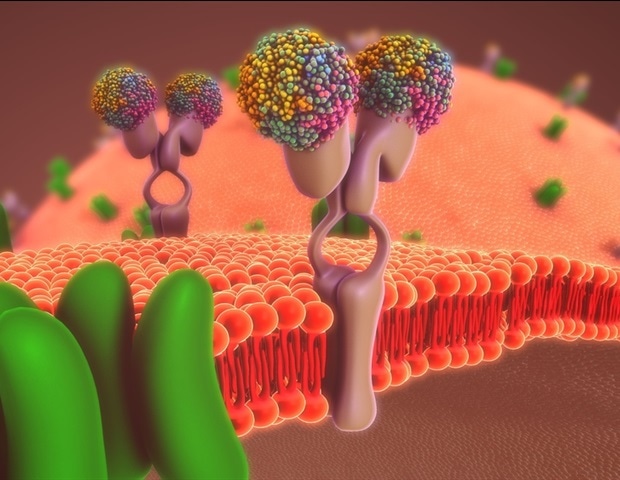Reviewers’ Notes

New method allows the discovery of specific inhibitors of lactate transporter
Scientists from the Giulio Superti-Furga Lab at CeMM, the Research Center for Molecular Medicine of the Austrian Academy of Sciences, have developed a new method that allows the discovery of specific inhibitors of a lactate transporter associated with cancer and other disease areas. The compound identified in the assay system could provide a new starting point for cancer treatments. The study has now been published in Cell Chemical Biology.
Transporter proteins, including their largest class, the solute carrier (SLC) family, are proteins that are mostly located in the cell membrane and are responsible for the supply and removal of nutrients such as amino acids, sugars and nucleotides in a cell. They are key players in cell metabolism and play an essential role in health and disease. Despite their vital physiological role and although they are considered attractive therapeutic targets, most SLCs have not yet been adequately studied pharmacologically. This is precisely what numerous scientists in the research group of Giulio Superti-Furga, Scientific Director at the CeMM the Research Center for Molecular Medicine of the Austrian Academy of Sciences, and professor at the Medical University of Vienna, are working on. They have now developed a method to target lactate transporters SLC16A1 and SLC16A3, which are associated with certain cancers and other diseases.
Lactate, an end product of glycolysis, is known primarily as a metabolic waste product, but it is also used as an energy source. In fact, it has been shown that in many tissues, highly glycolytic cells secrete lactate, which is then used as an energy source by neighboring cells. This has been observed, for example, in skeletal muscle, brain, testes, and tumor microenvironment (TME). Lactate is transported across the membrane predominantly by members of the SLC16 family. Of four key lactate transporters, studies particularly attribute a central role to the SLC16A1 (MCT1) and SLC16A3 (MCT4) genes. Giulio Superti-Furga explains, "We know for more than a century that tumor cells tend to be highly glycolytic, and that the concentration of lactate can reach extreme levels inside tumors. But it is only relatively recently that we are starting to understand the consequences of this. For example, the high lactate levels are contributing to the suppression of immune cells inside the tumors, or to the development of resistance to treatment. Lactate transporters play a key role in this, especially SLC16A1 and SLC16A3, which are known as the major lactate importer and the major lactate exporter. Both transporters are considered promising drug targets."
The study's first author Vojtech Dvorak, PhD student in Superti-Furga's lab, adds, "One of the major obstacles for the development of novel drugs that target SLCs are the frequent functional redundancies among several transporters that are present in cells. This makes it very difficult to isolate the impact of a potential drug candidate on a single transporter and hence determine the selectivity. In one of our previous projects, we found a synthetic lethality between SLC16A1 and SLC16A3 present in several cell models. This means that the cell normally has both transporters, and when one of them is either inhibited by the drug, or the gene for one of them is lost, the other transporter can compensate. However, if, for instance, the SLC16A1 gene is lost, the cell then becomes dependent on SLC16A3 for its survival (and vice versa). We realized that by creating several cell lines that are dependent on either of the distinct lactate transporters, we can use them to search for highly selective drugs."
In the study published in Cell Chemical Biology, the scientists describe the development of the assay system called Paralog-dependent isogenic cell assay, or PARADISO for short, and its use to develop a highly selective chemical probe targeting SLC16A3, called slCeMM1. Superti-Furga concludes, "The lack of specific cell-based assays is a problem for many promising drug targets, not only for SLCs. The logic of the PARADISO assay system should be in principle widely applicable and helpful in finding new therapeutic targets."
CeMM Research Center for Molecular Medicine of the Austrian Academy of Sciences
Posted in: Cell Biology | Biochemistry
Tags: Assay, Brain, Cancer, Cell, Cell Membrane, Cell Metabolism, Compound, Diagnostic, Drug Discovery, Drugs, Education, Gene, Genes, Genomic, Glycolysis, Hospital, Inflammation, Medicine, Membrane, Metabolism, Muscle, Nucleotides, Nutrients, Pathophysiology, Precision Medicine, Research, students, Translation, Tumor





